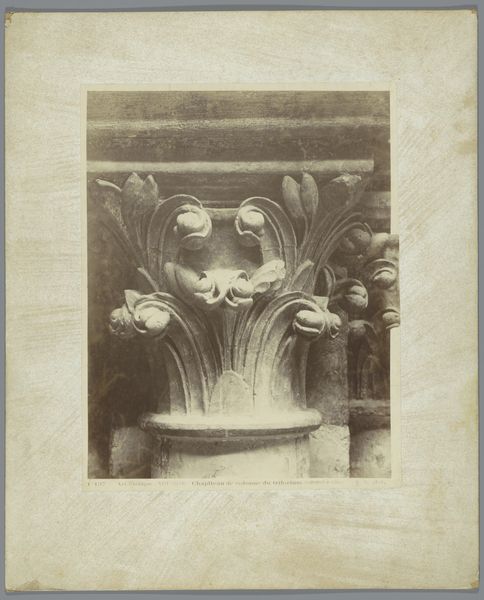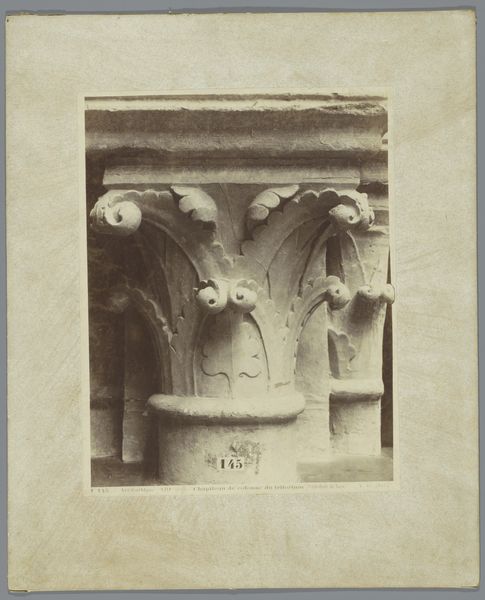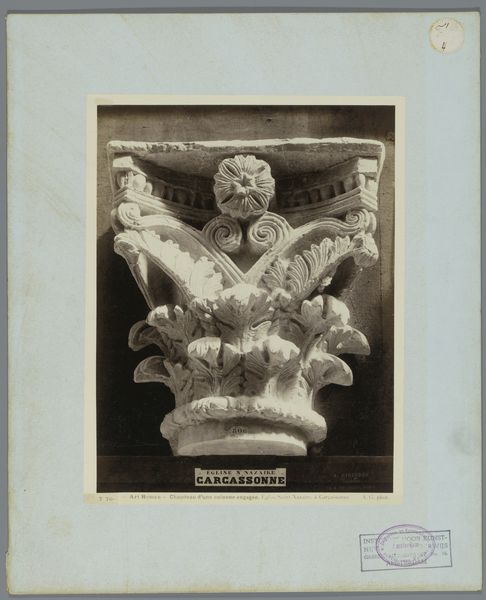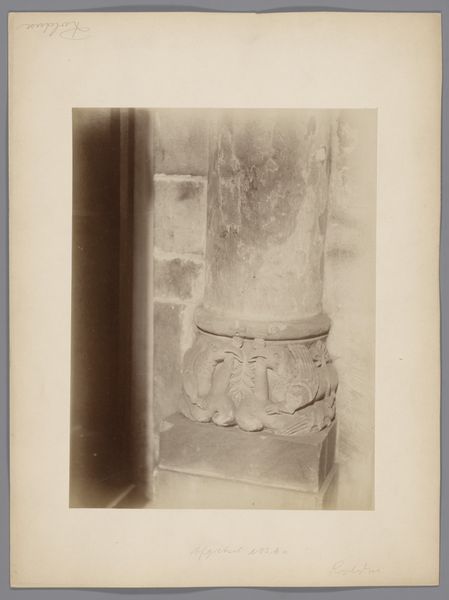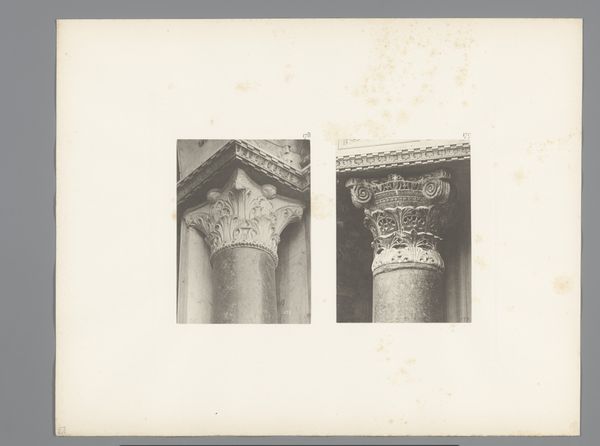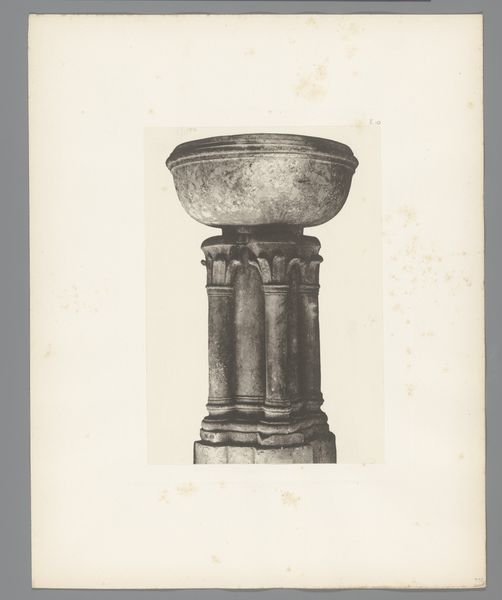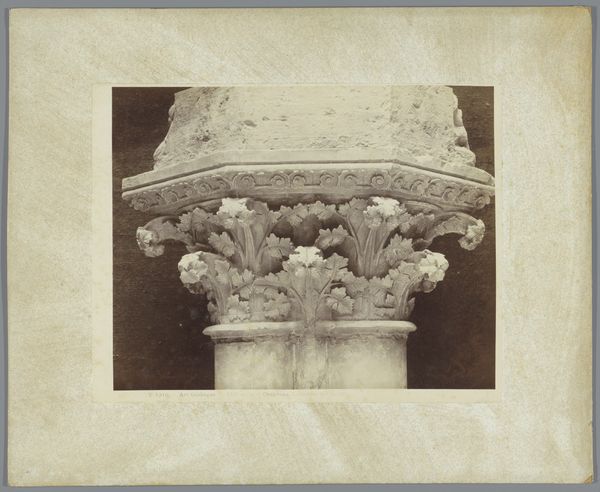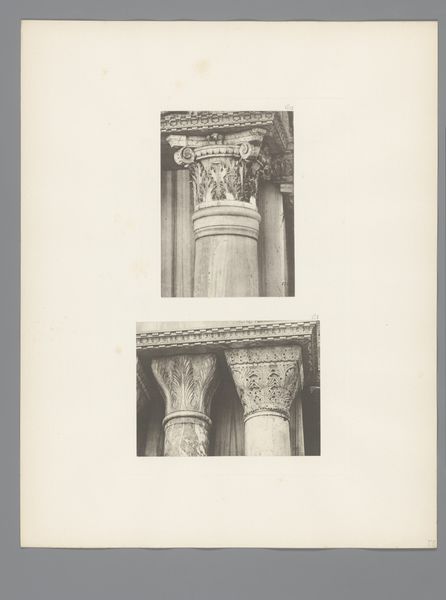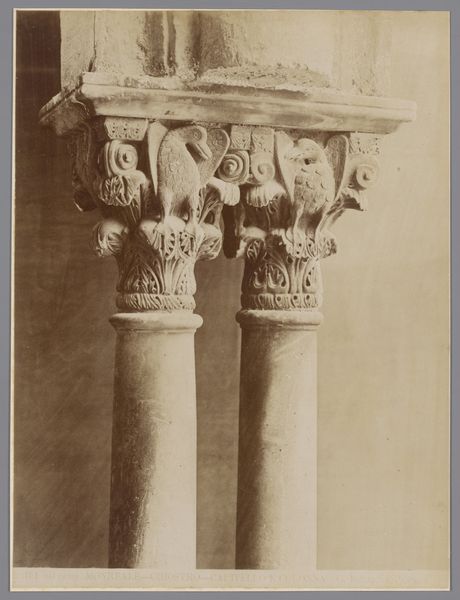
photography, sculpture, marble
#
form
#
photography
#
classicism
#
ancient-mediterranean
#
sculpture
#
marble
#
realism
Dimensions: height 259 mm, width 254 mm
Copyright: Rijks Museum: Open Domain
Curator: This photographic print from the Rijksmuseum collection depicts a marble capital adorned with acanthus leaves, dating from around 1875 to 1900. The photographer is Adolphe Giraudon. Editor: It feels... weighty. I mean that both visually – all that carved marble looks substantial – but also culturally. Columns like these, and their ornamentation, suggest so much historical baggage about power and empire. Curator: The acanthus leaf motif carries immense symbolic weight, originating in ancient Greek architecture and representing prosperity, immortality, and rebirth. Think of its adoption by the Romans and its subsequent use throughout the Renaissance and Neoclassical periods; each reiteration building layers of meaning. Editor: Right, and I find myself thinking about the labor involved in quarrying and sculpting marble. Each leaf painstakingly carved – an immense investment of time and skill that, in this case, supports…nothing! It’s a fragment, an exercise. Where did the stone come from? Who were the artisans? What was their social status? Curator: This image also highlights a specific moment in the history of architectural documentation. Giraudon's photography allowed for the dissemination of classical forms and ornamentation to a broader audience, influencing design and artistic styles far beyond the geographical boundaries of the original. It speaks to the enduring allure of classical aesthetics. Editor: True, and there's an inherent contradiction in photographing a piece of sculpture meant to support massive weight – almost undermining its original purpose by turning it into a decorative object divorced from the wider structure. We consume it here purely as a picture, an object of contemplation. Curator: That’s a good point. Perhaps, what we're truly examining is how classical symbols become detached and evolve into signs untethered to their original meaning. Editor: Yes. It becomes a question of recontextualization. From support structure to sculpted fragment, to photographic object, the use value dissipates while the sign value increases. Curator: It does make you wonder how its symbolism will continue to morph with future uses. Editor: Precisely. The lifecycle of a material and idea is full of transformations.
Comments
No comments
Be the first to comment and join the conversation on the ultimate creative platform.

